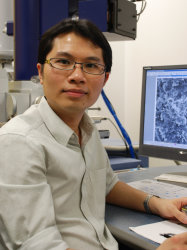BibTex format
@article{Zhang:2022:10.1617/s11527-022-01979-9,
author = {Zhang, K and Yio, M and Wong, H and Buenfeld, N},
doi = {10.1617/s11527-022-01979-9},
journal = {Materials and Structures},
pages = {1--18},
title = {Optimising confocal Raman microscopy for spectral mapping of cement-based materials},
url = {http://dx.doi.org/10.1617/s11527-022-01979-9},
volume = {55},
year = {2022}
}

